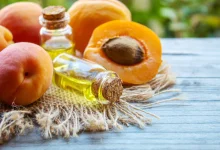Farming of Ladies Finger (Bhindi/Okra) in USA

Okra is a popular vegetable that is easy to grow and tastes great in various dishes. Before delivering okra, you need to know a few variables to ensure a successful harvest. An important part is the farming vehicle you use to plant and plow.
The Swaraj tx series is a great decision for ranchers who need a reliable agricultural vehicle to tackle tough situations thanks to its reputation for reliability and excellent workmanship. Vidalista 60 and Vidalista 20 are used to men’s health. Once again, the Kubota b series is a versatile working vehicle that has been successful in small farms and factories. Considerations when planting okra
- Environment:
Growing okra in an area with direct sunlight and fertile soil is important. For okra plants to thrive, plenty of heat and daylight is important.
- Tools:
To establish okra, push out about 3 feet with a shovel or tiller. Until the plants sprout, water thoroughly and keep the soil moist.
- Making organic fertilizer:
As your okra plants grow, keep the area around them free of weeds and other damage. Okra plants are susceptible to irritation and disease, so it is essential to monitor them and take action if you see anything strange.
- Territorial development:
Effective okra cultivation depends on intensive tillage and aeration. To control weeds and ensure good air circulation, let the dirt sit for seven days after testing. To promote weed germination, some breeders prefer to rinse the part between the plow and the nerve.
- Sowing, separating, and thickening leaves:
Okra seeds should be sown when there is a drip irrigation system. Seed germination can be improved after 10 hours of water immersion. Insect spray added to the pit helps deter underground insects, and treating springs with a fungicide promotes germination rates. To harvest, there must be enough space to walk between the columns.
- Intercropping:
Intercropping is not generally used in an okra business, especially when mulching is used to prevent weed growth. However, if the climate and soil conditions are suitable, it is possible to intercrop or adjust the yield in the ground such as sweet potatoes, onions, and garlic. Okra is usually grown exclusively as a solitary plant.
- Water system:
Successful okra farming depends on an attractive water system. Also during the torrential rainy season, the dirt must be washed twice a week. Unsatisfactory yields can occur due to waterlogging, which slows down crop improvement. The bottom line is that the fields have a lot of waste. He was encouraged to use the drip system and kept it very well.
- Manure:
About the 10th day after the seeds germinate, the preparation begins. For each hectare of growing okra, 200 kg of urea and 100 kg of potassium and phosphorus should be applied, depending on the type and age of the plant, the ratio may vary.
- Error checking:
Biological stem borers, aphids, powdery mildew, detritus, and nematodes are just some of the pests that okra is powerless to. While specific types may show protection against specific problems and diseases, no type is completely immune. The use of synthetic pesticides can be fundamental in case of problems.
- Size and preparation:
The techniques vary depending on the type of okra. A strong spreading tendency and good yield can be easily achieved for some types. However, some varieties benefit from pruning to proceed with cultivation. It’s important to remember that some types may require more support and compost to support the weight of branches and large trees, thus improving plant performance and health.
- Collection and after collection:
Harvest usually begins 60 days after planting and lasts up to 120 days, with 30 days of good harvest followed by 30 medium to light working days.
- Productivity:
Variations in okra yield are often based on a variety of factors, such as climate, soil quality, grading, and farming practices. One portion of common desi varieties can produce 300 to 400 kg per day for 30 to 45 days. However, during seasons with excessive rainfall or poor soil conditions, yields can essentially be as low as 30 kg per day. Under ideal conditions, high-yielding hybrids such as arka Nikita and Bombay f1 half can yield typical yields of 10-12 tons per plot.
- Choose a legal transporter of agricultural products:
If you have the right equipment and pay attention to your crops, you can have a delicious collection of okra. For productive okra, choose either the Swaraj xt line or the Kubota b line.









